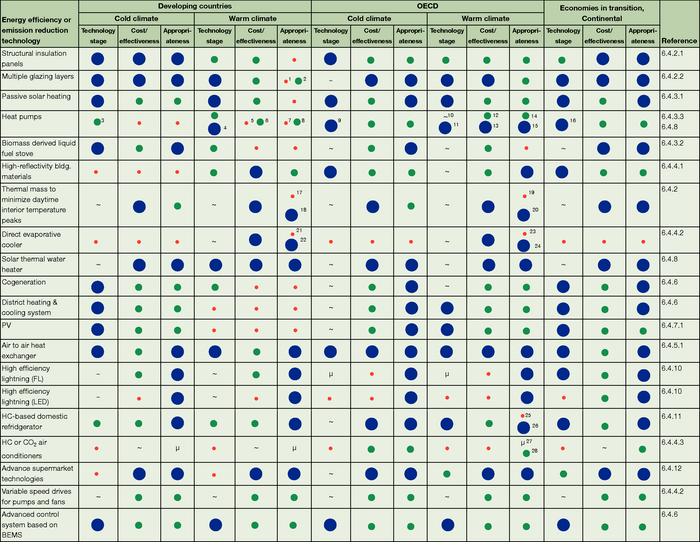6.4.16 Summary of mitigation options in buildings
The key conclusion of section 6.4 is that substantial reductions in CO2 emissions from energy use in buildings can be achieved over the coming years using existing, mature technologies for energy efficiency that already exist widely and that have been successfully used (high agreement, much evidence). There is also a broad array of widely accessible and cost-effective technologies and know-how that can abate GHG emissions in buildings to a significant extent that has not as yet been widely adopted.
Table 6.1 summarizes selected key technological opportunities in buildings for GHG abatement in five world regions based on three criteria. Twenty-one typical technologies were selected from those described in section 6.4. As economic and climatic conditions in regions largely determine the applicability and importance of technologies, countries were divided into three economic classes and two climatic types. The three criteria include the maturity of the technology, cost/effectiveness and appropriateness. Appropriateness includes climatic, technological and cultural applicability. For example, direct evaporative cooling is ranked as highly appropriate in dry and warm climates but it is not appropriate in humid and warm climates. The assessment of some technologies depends on other factors, too. For instance, the heat pump system depends on the energy source and whether it is applied to heating or cooling. In these cases, variable evaluation is indicated in the table.
Table 6.1: Applicability of energy efficiency technologies in different regions. Selected are illustrative technologies, with an emphasis on advanced systems, the rating of which is different between countries


